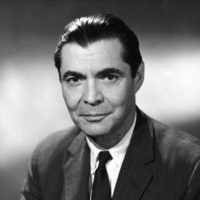
George E. Palade
The Rockefeller University
For contributions to the electron microscopy of biological materials.
In the early 1950s, 25 years after research had started in electron optics and 15 years after electron microscopes were available for research, Dr. Palade and his colleagues began mapping the detailed structure of various types of cells and developing the procedures which make it possible to correlate, at the molecular level, the structure of these cells with their biochemical activity.
In the past 15 years, as the ability to visualize small objects increased from the best light microscopes to the 400 times more powerful electron microscope, Dr. Palade's work has pioneered the study of the nature of cellular processes at a molecular level.
Dr. Palade developed the technique of fixing cells, an essential step in preparing them for electron microscopy. He first described and named the fine structure of mitochondria; he demonstrated the organization and structure of microsomes from which he distinguished the ribosomes, cytoplasmic particles composed of ribonucleoprotein; he also analyzed the complex structure of capillary vessels, including the renal glomerulus, as well as many other facets of ultrastructural anatomy. His recent work in integrating structure-function relations at an ultrastructural level, as exemplified by his work in following individual radioactively labeled molecules by electron microscopy in a study of the exocrine secretion of the pancreas, has provided a clear path to productive research for a new generation of electron microscopists.
Virchow, more than 100 years ago, established the cellular basis of disease. The fundamental discoveries of Dr. Palade have extended the concept of Virchow to previously unimagined levels of detail. The wonder of life has been brilliantly expanded, as structures, such as the ribosomes, intracellular membrane systems, cellular attachments, and specialized structures of different cell types—far beyond the power of the light microscope—are seen and understood.
To Dr. Palade, a scientific leader with imagination and technical ability, who traveled into a new land and became its chief geographer, this 1966 Albert Lasker Basic Research Award is given.
